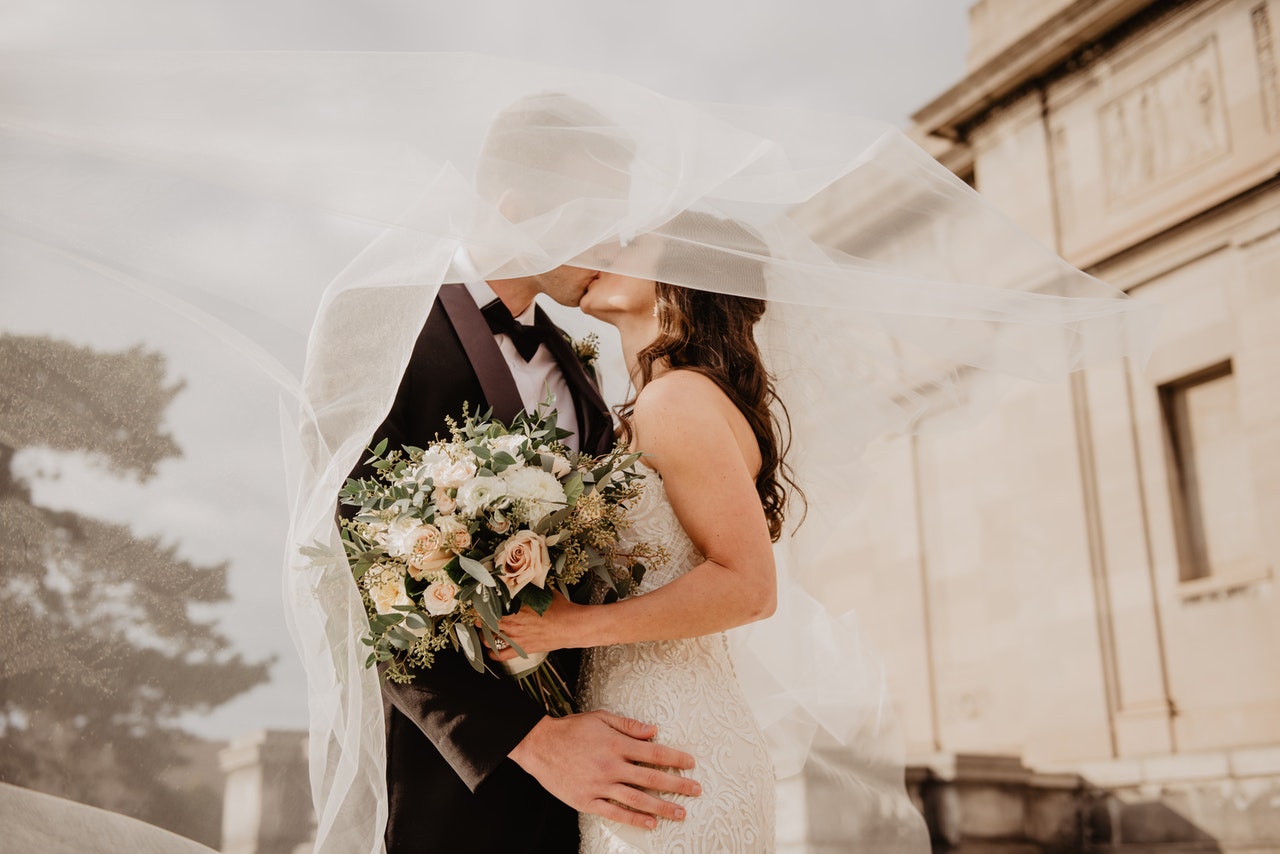As a professional wedding photographer, your website needs a blog to showcase your skills and attract new clients. Blogging is one of the most effective ways to build your brand and business.
From a search engine optimization (SEO) standpoint, search engines value websites that feature blogs filled with quality content. Hence your website will rank higher in organic search results, helping new prospective clients to find you.
Wedding photography is a competitive industry, and a high-quality blog will allow you to stand out from the crowd. Your blog is a marketing tool to establish the salience and authority of your brand (you). Let’s look at the step by step process of starting your wedding photography blog.
Identify Your Niche
Choosing a niche within wedding photography may sound counter-intuitive. As professionals, shouldn’t we take whatever work comes our way instead of being picky? Not really.
For a minute, switch your perspective to that of the couple. Their wedding is a special day, and they are spending a couple of thousand dollars (at least) on a photographer to capture it. Are they looking for a jack of all trades, or a specialist who can provide exactly what they’re looking for?
Carving Your Niche
You need to identify and carve out your niche within the domain of wedding photography to gain an edge over your competition. A specific and well-defined segment of the market will also allow you to refine your promotional strategy and optimize your client search.
To identify your niche, think of the weddings you’ve photographed and identify the types that you enjoyed the most and which produced your best work. Do you enjoy shooting small and intimate weddings, large and extravagant weddings in Italy, elopements, or ceremonious ethnic weddings from different global geographies?
Let’s say you like capturing elopement weddings because of the intimacy of the moment and the creative opportunities it provides when you are only photographing the couple as opposed to a roomful of guests:

Or maybe you’re an adventurer at heart and love the challenge of capturing intimate moments in an offbeat environment, like this wonderful and memorable underwater moment:

Perhaps you specialize in photographing same-sex couples, older couples, or anyone who doesn’t fit into the very traditional, old-fashioned view of wedding photography. You – and your happy past clients – are best placed to define your niche.
The answer to identifying your niche is linked to answering the question, “why did you get into wedding photography?” Drill down till you reach an answer that you can work with to build your business offering.
Price Your Services for This Niche
Do some research to establish the average pricing for the nice you want to service. Keep in mind extras such as travel costs and your overheads when calculating your pricing.
Experience also matters. If you’re starting out and only have a handful of weddings in your portfolio, you may not be able to charge premium prices. On the other hand, if you are a veteran in your niche, don’t compromise on your pricing. Let your portfolio justify your pricing.
Your pricing will impact the content you put on your blog. If you’re focused on extravagant, luxury weddings, your blog should have a similar feel. If you’re more concerned with providing a great service to couples on a budget, your blog will take a more down-to-earth tone.
Develop your Client Persona
Once you have identified your niche, you will discover that the couples you interact with share many similar traits. Use these traits to build a client persona that covers things like personality, likes and dislikes, location, background, and budget. Here’s an example:

Source: Alisa Meredith
Why is this important? You will be using your blog to address prospective clients, and chances are they will also fit into this persona at least somewhat. The persona will ensure you’re addressing your content to the right people, engaging them as soon as they land on your site and improving your conversion rate.
Content is King on Your Blog
Your blog is your primary marketing tool, and therefore the quality of its content is critical on the following three counts:
- It needs to be optimized for the right keywords to enable higher search rankings and greater visibility to your target audience.
- The content needs to be accurate, of high quality and posted consistently to establish the credibility of your brand.
- The content should create an emotional connection with your prospective clients through the use of text, visuals, and multimedia content. The content must be original and pass through a viable plagiarism detector. This will help you to analyze and check the content for any plagiarized text in it.
A typical wedding photography blog will have 10-15 pictures and just 50-100 words of text in an average post. These blogs will never rank on the search engines. Therefore, no matter how good the visuals are, they will likely never reach their target audience.
To rank well on search engines, your posts must be optimized for keywords and have at least 400-500 words of text each, preferably more. Also, ensure that the images you use have alt text tags, or small snippets of text that describe them. You will find more information on creating SEO-friendly blogs here.
If you don’t have the aptitude or time to write long-form, high quality content, you can delegate the content creation to a freelance writer who is skilled at creating user- and SEO-friendly content.
Cover a Wide Array of Topics
Use your experience to write on a wide range of topics. Naturally, they should all be focused on weddings, but they do not necessarily have to be photography related (though some should be). You can write about topics such as wedding dresses, tuxedo rentals, wedding cakes, venues, and even menus and seating arrangements. Your prospective client, a bride or groom to be, will think very highly of you if you can provide relevant insights on multiple areas of wedding planning. Alternatively you could also create an in-depth pillar page on Planning a Wedding .
Each subtopic in the post can be covered in depth in a separate cluster post.
The more client issues and pain points you can address and resolve, the greater the credibility of your brand and the higher the likelihood of a conversion. One Fab Day is a fantastic example of a wedding blog that covers a diversity of topics.

Source: onefabday
The quality of content also means text that is free from grammatical, spelling, and punctuation errors. Poorly written content creates a negative image in the mind of the reader. Even if you’re a skilled writer, it’s a good idea to use a punctuation checker to catch any mistakes before you publish. Additionally, you may want to consider using a plagiarism checker to identify any possible plagiarism mistakes – even if these are accidental.
Blogs That Tell a Story
Use your blog posts to tell a story that engages the reader and builds your credibility. People engage with stories on an emotional level, so if you can build that investment they’re far more likely to remember you and return to your site again and again.
Let’s say you’re writing a blog about a high-budget, elaborate wedding that you shot. You would, of course, include pictures and text that highlight the grandeur of the occasion while keeping the couple front and center. But how about sharing some pictures and snippets on what the couple’s families were doing and their experiences of the day? This will bring emotion to the story, connecting more deeply with your target audience.
Behind the scene stories are also an opportunity for you to showcase your dedication and the lengths you will go to capture the perfect picture and moment. So if you’re willing to go above and beyond for your clients, show that off, like Jay Philbrick did in this daredevil shot:

Source: Jay Philbrick
Remember, you are selling your brand. What do you want your clients to remember about you? Tell a story that highlights that element of your business.
Diversity of Content Formats
Diversity of content on your blog will raise engagement levels and establish an emotional connection with the reader. Beyond the standard text and picture blog posts, look at adding video and perhaps audio content, too.
For example, you can feature video clips taken before, during, or after the wedding day. This might include candid clips, such as featuring the first dance or cutting the cake, or short sections with the couple, wedding party, or guests talking about their experiences and how they are feeling. Remember to get permission in advance if you want to shoot and use video.
Video content creates an ambience and gives your prospective client an insight into what they can expect when they work with you. As a bonus, videos are also highly shareable on social media and can have SEO benefits, too.
Promote Your Blog
It’s pointless to spend time creating great content if you’re not going to showcase it to the largest possible audience. Therefore, when you start your blog, you also need to promote it.
Look at the following avenues to promote your blog:
- Email campaigns
- Social media
- Aggregate sites and community up-posts
- Outreach and partnerships
Let’s look briefly at each one in turn.
#1. Email Campaigns
When we consider the following email usage statistics, it becomes clear that email is far from gone.
- Over 4 billion people use email.
- Over 300 billion emails are sent every day.
As a freelance wedding photographer, it’s unlikely that most couples will convert (book you to photograph their wedding) the first time they visit your site. Choosing a wedding photographer is a big decision and they are likely considering several possible candidates. But what you can do the first time they visit is add them to your mailing list.
This means that they can receive your blog updates and other relevant communications by email. By keeping your business front and center in their minds, you increase the likelihood they’ll decide you are the right photographer for them. When you finally send them a sales about something you’re offering, they’re more likely to become a paid customer. Don’t forget to send a follow-up email, too, since 80% of sales are made after five points of contact.
Pro tip: offer a lead magnet in exchange for their email address. How about a wedding planning checklist or a downloadable guide to “Ten Things to Be Aware of When You Book a Wedding Photographer” as ideas to get you started?
#2. Social Media
Include links to your blog on all your social media profiles, focusing on the platforms where your target audience is most likely to be. Visual platforms like Pinterest and Instagram are particularly useful for wedding industry professionals because brides and grooms to be often turn to them for inspiration.
Share your favourite photos from recent shoots on your social media channels, and use them to link back to relevant recent posts on your blog. In this example, photographer Nina Weinstein shared a photograph from an engagement shoot and used the caption to encourage viewers to visit her blog post about the shoot:

Pro tip: You can use tools like CoSchedule to share your blog posts on social media in real-time.
#3. Aggregate Sites and Community Up-Posts
Aggregate sites are community sites devoted to a specific topic. These sites attract traffic relevant to your business, and posting your blogs here gives you maximum visibility to a relevant audience.
Register on websites like Zola, Carats & Cake, and Postable that service the wedding niche. The up-vote aspect of these communities helps your blog posts gain traction and sustained visibility with people who are looking for exactly the type of content you’re offering.
#4. Outreach and Partnerships
You don’t have to stop at promoting your content yourself. Why not partner with relevant influencers, such as fellow bloggers (in complementary but non-competing niches) or influencers?
The following statistics bear out the value of influencer marketing.
- Only 1% of millennials said that an ad would increase their trust in a brand, while 33% said they trust blog reviews when making purchasing decisions.
- Over 40% of people reported that the views of influencers on YouTube, Instagram, and Twitter influenced their purchase decisions.
- 71% of influencers believe that an honest voice keeps the audience engaged.
Marketing your blog and business through an influencer in your niche gives your blog a wider audience and greater credibility to your brand.
A fantastic example of influencer marketing is the tie-up between Bigelow Tea and lifestyle bloggers like Ashley at Cherished Bliss. The campaign generated 32,000 blog engagements and 44 million impressions and raised sales for Bigelow Tea by 18.5%. There’s no reason you can’t tap into the power of influencers to promote your business, too.
Conclusion
Wedding photographers can use blogging as a marketing tool to gain visibility and stand out from the crowd. Identifying your niche and pricing your services is the first step in starting your blog. Once you understand your audience, you can create content that will resonate with them.
High quality content and a multimedia experience on your blog are both of vital importance. This will go a long way toward giving your brand and blog high visibility – and credibility – to your target audience. Use your blogs to showcase your experience-based expertise on topics related to the wedding industry and to showcase your best work.
Last but not least, you need to promote your blog across relevant social media platforms and marketing channels such as aggregate sites and influencer partnerships. All this will go a long way towards keeping your client pipeline full.
Good luck in setting up your blog in 2021!
Bio
Nicholas Rubright is the communications specialist for Writer – an AI writing assistant designed for teams. Nicholas has previously worked to develop content marketing strategies for brands like Webex, Havenly, and Fictiv.


